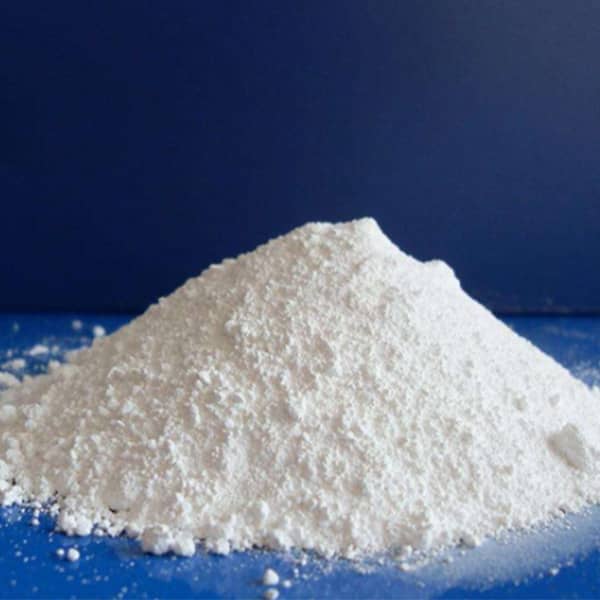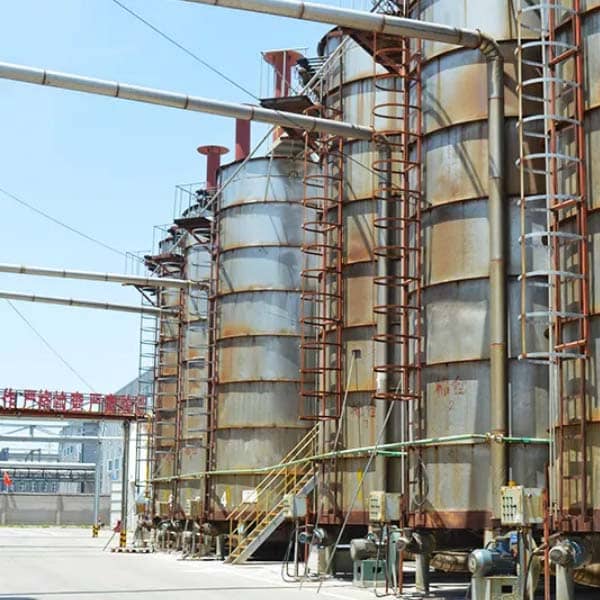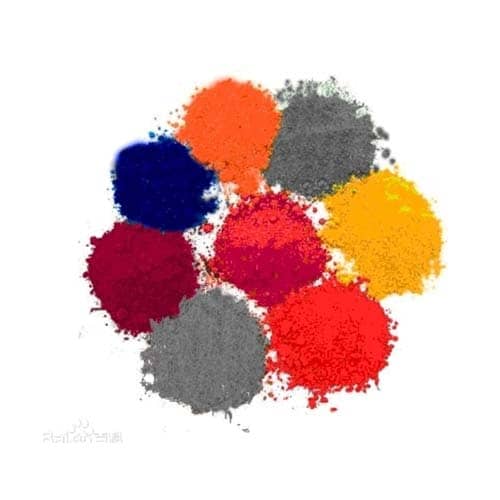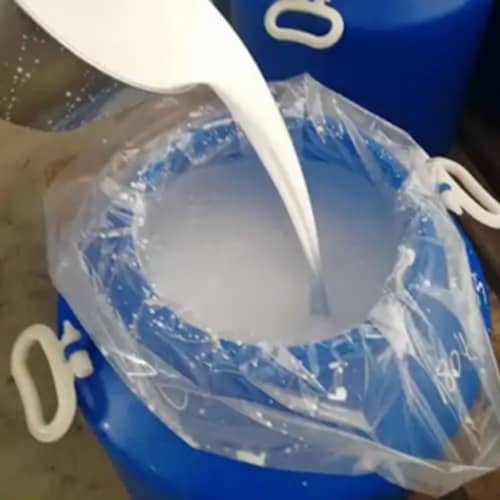Application of Titanium Dioxide in Plastic
1.Titanium dioxide in plastic production process:
The scientific name of titanium dioxide is titanium dioxide. It has excellent white performance, high hiding power and high achromatic power. It is used in ink, paper, paint, paint and other industries, and enjoys the reputation of “white king”. An important reason for its application in products is that titanium dioxide can determine the appearance of light-colored or white plastic products.
Of course, titanium dioxide has many other benefits in plastics, such as improving the heat resistance, light resistance and weather resistance of plastic products, protecting plastic products from UV light, and improving the mechanical and electrical properties of plastic products. Titanium dioxide is used in almost all thermosetting and thermoplastic plastics.
They can be mixed with resin dry powder or liquid containing plasticizer. The dosage is generally about 3-5%. Titanium dioxide polyolefins (mainly Low-density polyethylene), polystyrene, ABS, polyvinyl chloride, etc.
There are four main indicators to measure the quality of titanium dioxide in plastic industry – covering power, dispersion, weather resistance and whiteness. About titanium dioxide in plastic: the better the hiding power of titanium dioxide, the lighter and thinner the plastic products produced; the dispersibility affects the production cost of plastic products, the better the dispersibility of titanium dioxide, the higher the smoothness and brightness of the plastic products; it has good weather resistance Titanium dioxide is essential for outdoor plastic products and plastic doors and windows.
Another major indicator is whiteness, the so-called whiteness refers to the degree of distance from the ideal white. The main factors affecting the whiteness of titanium dioxide are as follows. The first point is impurities. In the titanium dioxide process, especially the sulfuric acid method titanium dioxide process, most of the operations are to remove impurities in the product, because impurities seriously affect the application performance of titanium dioxide, especially the whiteness.
Color-forming metal oxide impurities can affect the whiteness at very low content. These elements include iron, manganese, chromium, copper, etc. These impurities themselves have color, and it is easy to develop color in white titanium dioxide.
The second point is the distribution of particle size and particle size. They mainly affect the whiteness of titanium dioxide particles through reflection and scattering of light. The smaller the particle size of titanium dioxide, the higher the whiteness value.
This is mainly because the smaller the particle size of titanium dioxide, the larger the surface area, and the enhanced light reflection and diffuse reflection. According to the characteristics of the light wave, when the particle size of the pigment particles is less than half of the light wave, a large scattering of the color light of the wavelength can be obtained.
After analysis, the particle size of the blue light with a good scattering wavelength is about 0.2 μm, and the red light with a longer wavelength can be obtained. The particle size with large scattering is about 0.35 μm. Therefore, the scattered light of titanium dioxide in plastic with small particle size is blue phase, while the transmitted light is blue complementary color red-yellow phase. On the contrary, the scattered light of titanium dioxide with large particle size is Red phase, transmitted light is blue phase.
Generally, the particle size of titanium dioxide for coatings is 0.2~0.4μm, while the particle size of most titanium dioxide for plastics is relatively fine, with a particle size of 0.15~0.3μm, because it can obtain a blue base phase, which is not suitable for most of the yellow phase. The resin or the resin that is easy to yellow has a shielding effect.
In addition, particle shape, titanium content, and coating agent have certain influence on the whiteness of titanium dioxide. Among them, the effect of particle shape on whiteness is relatively small. Generally speaking, the whiteness of layered titanium dioxide is slightly lower, and the whiteness of spherical and rod shapes is slightly higher. With the increase of titanium dioxide content, the whiteness value of titanium dioxide in plastic also increases, the content of coating agents such as aluminum, silicon and zirconium increases, and the whiteness value of titanium dioxide decreases.
In the production process of plastic masterbatch, the whiteness of titanium dioxide is also an important quality indicator. Plastic masterbatch is a highly concentrated and high-efficiency color configuration, that is, the pigment is evenly distributed in the carrier resin at an extraordinary concentration. , and form particles of a certain size.
It is mainly composed of a core layer (pigment), a coupling layer (coupling agent or surfactant), a dispersion layer (lubricant or dispersant), a mixing layer (carrier resin), etc. It is used as a coloring agent in plastics. It is used in the production of plastic products such as film blowing, injection molding, hot pressing, injection molding, etc. The color masterbatch has excellent coloring effect, convenient use, energy saving, and no dust and sewage during use, so it is favored by users.
Color masterbatch is used as an industrial raw material, and its performance is usually manifested in subsequent product applications (such as film blowing or injection molding). Therefore, the performance of titanium dioxide in plastic and color particles is also mainly reflected in the application process of color masterbatch. The coloring ability, dispersibility, processing performance and whiteness of titanium dioxide will have a significant impact on the application of color masterbatch.
2.Application of Titanium Dioxide in Plastic Products
In the plastics industry, titanium dioxide in plastic is the most widely used white pigment. The plastics industry has become the second largest user of titanium dioxide and has been the fastest growing field in recent years, with an average global annual growth rate of over 6%.
It is mainly used in the fields of building plastic steel doors and windows (PVC profiles), plastic auto parts, plastic communication equipment, household appliances and other fields. The heat resistance, light, climate and other properties of plastic products protect plastic products from ultraviolet rays and improve the mechanical strength and electrical properties of plastic products.
There are more than 500 grades of dióxido de titânio rutilo and Anatase Titanium Dioxide sold in the global market, of which more than 50 are dedicated to plastics.
Since plastic products are usually much thicker than paints and inks, the dosage of titanium dioxide in plastic products is generally 3~5%.
Application of titanium dioxide in plastic, it is required to have fine particles, good dispersion properties, good heat resistance and light resistance, and not change color during plastic processing and use. It has been found through research that when some inorganic-coated titanium dioxide and plastic are blended and extruded, the evaporation of adsorbed water will cause pores on the smooth plastic surface.
Therefore, inorganic-coated titanium dioxide in plastic generally needs to be re-processed. Organic surface treatment, and the high content of TiO2 in the high-concentration masterbatch requires higher dispersibility of titanium dioxide in plastic, so the surface treatment of titanium dioxide is also correspondingly higher.
Jinan Hongquan Indústria de titânio Co., Ltd está localizado em Jinan, uma bela cidade de primavera. O pessoal de pesquisa científica da empresa coopera sinceramente com universidades nacionais bem conhecidas e várias empresas de produção de dióxido de titânio para estudar e produzir pigmentos ativos de dióxido de titânio com grande concentração. Alguns de seus produtos têm sido amplamente utilizados em produtos químicos, têxteis, papel, plástico, tintas e outros campos de produção.
Os produtos da empresa (como o dióxido de titânio da marca Lomon) foram demonstrados por renomados especialistas nacionais, e a conclusão é: “a inovação tecnológica é forte, melhora o desempenho e a utilização de pigmentos, reduz a dosagem, economiza recursos, benefícios econômicos, não ambiental poluição, de acordo com as estratégias nacionais de promoção e desenvolvimento industrial”





